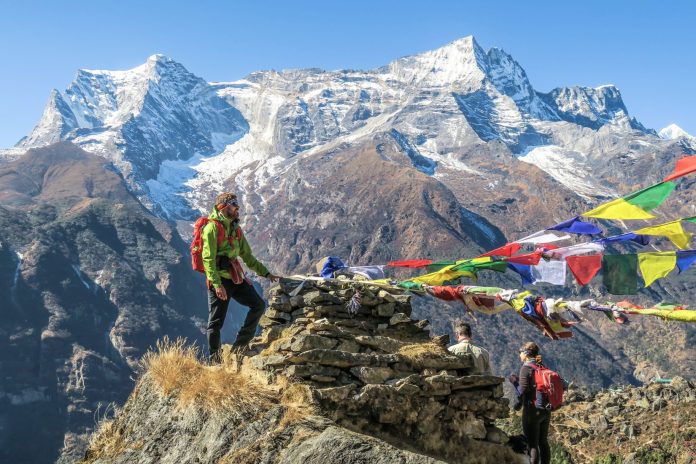About
Everest is the highest mountain in the world. It is the most amazing trek in the world and a dream destination for every traveler. The trek started in the 1920s, led by George Mallory and his team. This trek provides a teahouse where you can stay at a lodge that provides you with a feel of local culture, village life, and traditions.
At the end of the trek, we will reach the Sagarmatha National Park, which is a UNESCO World Heritage Site. It covers approximately 1,149 km2 of land in the Himalayas.
The National Park
It is the highest national park in the world. The park contains a unique combination of forests, barren land, and snow-capped peaks that have at least 118 species of birds Rare species of mammals are also found in this area, such as the snow leopard, Himalayan black bear, and the red panda.
Yaks are common in the park, owing to the Sherpas’ (Tibetan people who live at the side of the Himalayan Mountain Range) use of them to transport goods up and down the mountain. Trees like pine, oak, and forest juniper are found here.
This park was established in 1976 and, in 1979, became known as a World Heritage Site. From roughly 3,500 in 1979 to over 30,000 annual visitors, the number of tourists visiting the region annually has increased drastically.
Basic Knowledge
This trek is best done between May and September, as well as between September, November, and February. And the average temperature is 17 degrees Celsius, with the coldest months being December and January.
The Everest Base Camp Trek has an altitude of 17,598 feet, and it is a moderate trek. The time duration required for this trek is one to two weeks. During this trek, you can witness the four highest mountain peaks in the world: Cho Oyu, Mt. Everest, Mt. Makalu, and Mt. Lhotse, and any other mountain terrain you’ve seen before, breathtakingly and magnificently.
The journey stretches from green forests of pines, fir, and oak, cultivated lands, and terraced fields to blue rivers, meadows, and glacial lakes amid large boulders that grow as you climb.
How to Reach Everest Base Camp
First, you need to reach Katmandu. The best way to reach here is by flying to Kathmandu’s Tribhuvan International Airport. There are so many direct flights from Delhi, Mumbai, Kolkata, Bangalore, and Varanasi to Kathmandu, or any airline receiving flights from Southeast Asia and Europe to Katmandu.
Detailed Guide
Day One: You arrive in Kathmandu and take a rest over there.
Day Two: The next day you fly to Luke, also known as the world’s most dangerous airport. Where the trek starts and reaches Phakding, they trek to Phakding.
Day Three: You must then travel to Phakding and then to Namche Bazaar. Khumbu I is a major trading hub.
Day Four: You can go from Namche Bazaar to Tengboche. At Khumbu, do visit the largest Buddhist monastery.
Day Five: The next day, you can travel from Tengboche to Dingboche, where you can find stunning views of Ama Dablam.
Day Six: You have to move towards Lobuche. Do pay your respects at the Everest Memorial. It is a mandatory thing to do while you are trekking to Everest Base Camp.
Day Seven: Lobuche to Gorkhashep and do an excursion to Everest Base Camp
Day Eight: Hike to Kalapatthar and return to Pheriche, where you can see Mt. Everest from above.
Day Nine: On the last day of trekking, you need to come back from Namche Bazaar to Phakding to Lukla.
Day Ten: Return to Kathmandu, and you need to say goodbye to your peace and all the memories you created.
Things that are essential
Your flight luggage weight limit is 10kg, and you can hand-carry another 5kg. So, your total comes to 15 kg. During the trek, porters will carry your luggage. However, you will have luggage, which is important. You can bring 9 kilograms of luggage on the trek. Two trekkers will share a porter, and a porter will not carry more than 18 kg of weight.
Do carry a small backpack with you that ensures that your important documents, like your passport, and valuables are safe with you. You can use Wi-Fi at lodges, teahouses, and cafes during the trek, but you need to pay a small service charge. You can also buy a local SIM in Kathmandu, but at a high altitude, you may not receive a signal. Trek regions have electricity, so you can recharge your phone.
Things to pack
Do carry your sleeping bags Jackets, sweaters, suncream gloves protein bar water bottle a good pair of shoes, and luggage, and do take a raincoat for emergency some basic kit of medicine and tents, etc.


